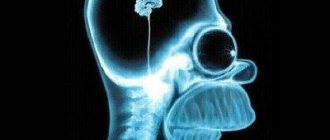Hello, dear readers! Today we will talk about middle age and its inherent crisis. Since you found this material, you probably began to suspect or experience some kind of personality changes. Do you think they are age related? Maybe. To find out, read on.
The period of middle age (adulthood) is interpreted differently in relation to its age stages. So, for example, D. Wexler called average adulthood the period from 20 to 35 years, D. Bromley - from 25 to 40 years, D. Birren - from 25 to 50 years. And according to the international classification, middle age is the life period from 36 to 60 years.
Generally speaking, and from the position of a social approach, rather than a psychophysiological one, another interpretation of the boundaries of middle age is found in the scientific literature. It is more generalized and individual for each person: from the moment of receiving professional education until retirement.
Thus, middle age is the middle of adulthood. There are early adulthood (18-22 - 30 years), middle (30 - 40-45 years) and late adulthood (40-45 - 55-60 years). We can say that this is a kind of transitional moment from youth to old age. On the one hand, a person still feels like a youth, but on the other hand, he understands that his time is running out. Old age is approaching, new personnel are coming to work, and the body’s strength is no longer the same. But is this really so?
Summary
To begin with, dear readers, I would like to briefly introduce you to the phenomenon discussed in the article through the basic concepts of developmental psychology.
- Social situation of development: taking full responsibility for your life and the lives of other people.
- The leading need of middle age is to be in demand (at work, at home, in the circles of the younger generation, and so on).
- Leading activity: labor, communication and family.
- Specifics of communication and communication connections: professional communication, assimilation of marital and child-parent relationships.
- New developments of age (new characteristics): construction of life strategies, life decisions, the phenomenon of acme (peak of development), a new level of intellectual development, the phenomenon of parenthood.
- Age crises: thirty years (search for the meaning of life, correction of strategy and life plan, change of guidelines); forty years (reassessment of values, feeling of loss of youth, doubts about the correctness of the life lived).
The severity, duration and success of resolving the crisis depend on the nature of the course of the previous age period, individual characteristics, and life circumstances.
Specifics of middle age
Within the framework of developmental psychology, the period of adulthood, including middle adulthood, has been studied the least. However, several supporting thoughts can be identified.
- All aspects of personality develop approximately equally. This refers to ongoing physical, mental and personality changes. For comparison, I will give this example. The most striking representative of the uneven development of human resources is adolescence: rapid body growth, hormonal changes, but lagging professional and intellectual development.
- Adulthood presupposes social and legal maturity. This means compliance with one’s duties, obtaining rights, bearing responsibility for one’s actions and words, and the ability to occupy any social and professional status.
- The main psychological element of middle age is the person’s perception of himself as an adult and his attitude towards himself and his age.
The latter is where the midlife crisis comes from. Erik Erikson, a famous psychologist and psychotherapist, noted that middle age is not just another life stage and age period, but the immediate equator of a person’s entire life.
Crises
Crisis – the impossibility of further life in the previous status; the inability to overcome obstacles with usual actions.
The interpretation of middle age as an equator speaks for itself and hints at the content of the crisis. There is an assessment of the path traveled and construction of a future life based on the available “material”. The individual evaluates his success in personal, professional and social life. Often compares with peers.
What’s important is that he views his achievements through his own worldview prism. A crisis occurs when personal needs, desires and experiences diverge. That is, in someone else's eyes a person can look successful, but in his own - worthless.
- The first midlife crisis, according to the theory of psychologist Daniel Levinson, occurs at the age of 29-32. Manifested by a revision of values and the essence of life. There is a need to take stock and at the same time for change.
- The second crisis occurs at 40-42 years old. It is based on the personal question “What can I give to other people, to the new generation?” Most often, a contradiction arises between the dreams of youth, the goals of youth and the reality of maturity.
Sometimes there is only one crisis at any one stage, which includes elements of both of the above. A midlife crisis is also called a motivational crisis (“Why?”, “What’s the point?”).
Adulthood crises have several distinctive features (in comparison with childhood age-related crises):
- More aware, but at the same time hidden.
- Occur less frequently.
- They are more attached to the individual life line than the age line.
- Caused by physiological, social, psychological and gender factors.
The main thing you need to understand about a midlife crisis is that it is an extremely subjective and individual phenomenon based on the satisfaction (dissatisfaction) of a leading need. Based on the need, we can say that two areas of life are significant for a person: professional and family. Satisfaction and dissatisfaction with oneself, and, of course, personal development primarily depend on them.
Professional area
In adulthood, a person is often faced with the understanding that the profession was chosen incorrectly, which is why he needs to relearn. How can you determine job satisfaction or dissatisfaction? There are several supporting statements:
- In the right job, a person gets tired not from the work itself, but from the factors that prevent him from doing it.
- Work activity is continuous, constant motivation is maintained.
- There is initiative and responsibility remains. This point is often associated with the psychophysiological characteristics of the individual. Initiative can disappear, for example, even in childhood due to improper parental upbringing. And also the person himself is able to suppress his desires and needs (this is initiative). For example, knowing that their bosses will reject them anyway. The third reason for lack of initiative is insufficient competencies for their presentation and implementation.
Thus, discomfort is caused by the awareness of one’s own business and the routine of life.
Family sphere
In the context of a midlife crisis, a family crisis often follows. As a rule, by the age of 30-45 people are already starting families. Moreover, many individuals are already parents, often of quite adult children.
The situation changes radically if the crisis and the period of middle adulthood in general are superimposed on the teenage period and the crisis of the child. There is a simultaneous reassessment of values among two generations. The optimal way out of the situation is to restructure relationships from patronage to partnership.
The second nuance of the totality of adolescence and middle age is the professional orientation of children:
- Firstly, contradictions may arise against the background of the economic side of the issue.
- Secondly, parents who have experienced and realized their own mistake of choice may try not to change their professional field themselves, but to realize their plans through their children.
Personal development
This characteristic is closely related to the previous two. An adult personality is defined by 3 categories:
- care and education (creation) of a new generation;
- productive professional sphere;
- individual creativity.
That is, a person participates in the cultural and social progress of society. Having children and creating something socially significant (works of art, literature) can replace each other.
A middle-aged adult typically has the following personal characteristics:
- ability to take responsibility;
- organizational skills;
- ability to provide emotional and intellectual support to others;
- self-confidence and determination;
- tendency to philosophical generalizations;
- developed will and resistance to life’s difficulties;
- the ability to defend one’s beliefs and stick to them;
- formation of an individual life style;
- desire and desire to participate in public life, give your experience and knowledge to the younger generation;
- real outlook on life, sober expectations, a sense of accomplishment and an organized life;
- stabilization of social, financial and other own systems.
These are personal new formations of middle age. Some of them are formed closer to late adulthood, some can be caught already at an early stage of growing up. But most of these characteristics are acquired by a person during the golden mean (middle age).
A little more about personalities, behavior and the crisis
All mature people are divided into 4 types:
- Spontaneously ordinary. The life of such a person is not organized. It is difficult for him to control what is happening due to the fact that he constantly cannot keep up with time. That is, a person has to adapt to situations that have already happened.
- Functionally effective. The individual takes an active part in his life, organizes it, and directs it. However, this is situational and selective. There is no general plan for life.
- Contemplative-prolonged. He goes with the flow, does not have his own plans and desires (except for momentary ones).
- Creative and transformative. Ideal behavior for an adult. This is a successful person. She is able to control and manage time, to connect situations and events with the overall life plan.
The severity of a midlife crisis depends on the type of behavior. The last type is least susceptible to crisis. Most of all - the first. You may ask, why not the third? The answer is simple: a passive person simply will not notice any contradiction, or rather it will not arise. And the first will experience serious discomfort from the inability to influence the course of life.
Treatment with folk remedies
Folk remedies can become auxiliary methods aimed at overcoming anxiety and generally strengthening the body.
- It is recommended to regularly drink herbal teas, which may include valerian, mint, chamomile, yarrow, lemon balm, strawberry, etc.
- A decoction of rose hips, hawthorn, and cranberry juice is useful.
- It is recommended to consume honey before bed, which helps normalize sleep.
- Remedy with dried fruits. Mix equal parts of dried apricots, prunes, raisins and walnuts (100 g each), chop everything and add 50 g of honey. Store the product in the refrigerator, use 1 tbsp. l. 2-3 times a day.
“Dominant basic makeup” of personality
Psychotherapist Bernard Livehud determined that by middle age the personality has a certain base, a “dominant basic structure” against which a person’s life develops. Interestingly, the inclinations of one type or another are present from birth. The author identified several types of people and the specifics of their adulthood:
- Research type. As a rule, these are lonely people, passionate about an idea and accumulating information. Their goal in life is to understand how the world works.
- Thinking type. They strive to systematize the data obtained, identify connections, and propose theories. They don't always follow logic. They seek out or create contradictions. For this they are not always well received by society or end up in conflicts.
- Organizing type. Adults of this type do not like to reason, but love to do. They are building a career and trying to constantly move up.
- The caring type. The name speaks for itself. For such a person, it is important to take care of someone, raise them, feed them, protect them. It’s great if such a person works as a teacher and has a full-fledged family at home. Then there are all the prerequisites for successful self-realization in all areas.
- Reforming type. These are innovators and pioneers. They are freer than other types, but are often punished and misunderstood. Such people create culture and develop society.
- Protective type. The opposite of the previous one. They strive to leave everything as it is, record it as accurately as possible and pass it on. The profession of historian and accountant is perfect for them.
- Creative type. Rarely found in its pure form. There is an opinion that creativity has a place in any profession. A trait like creativity is useful everywhere.
Based on this typology and the fact that the formation of types begins much earlier than middle age, I dare to suggest that the severity and content of the midlife crisis depends on the orientation of the individual.
So what do I want to say? You can't use clichés. For example, it is a mistake to believe that all childless or single people can suddenly begin to suffer because of this when they reach middle age. Some people don't really need it. For example, the organizing type. He is more likely to suffer if he realizes that he has not reached the maximum in his work that he could or wanted.
Thus, a mature person is happy and satisfied with his life when his beliefs and values do not contradict what he does; when he realized himself in all areas. Self-realization in this case means the active embodiment of one’s ideas and values with the help of one’s talents and abilities in activities (professional and social) that do not contradict one’s system of life beliefs. Otherwise, a severe midlife crisis occurs.
Diet
Diet for the nervous system
- Efficacy: therapeutic effect after 2 months
- Timing: constantly
- Cost of food: 1700-1800 rubles per week
Nutrition should be as varied and healthy as possible. It is important not only to eat healthy food, but also to try to structure your diet so that the dishes are tasty and enjoyable.
The menu should include the following products and dishes:
- Rose hip decoction, citrus fruits, sauerkraut.
- Nuts, seeds, sea fish.
- Lean meat.
- Cereals, cereals.
- Green vegetables.
- Honey, dried fruits.
It is advisable to drink less coffee and strong tea, and keep alcohol to a minimum.
Middle age, what next?
It has been scientifically proven that middle age is the least related to physical age. This is the difficulty of defining clear age boundaries. The same, by the way, is relevant for the moment of crisis. The onset and duration of middle age depends on the individual's individual characteristics, experiences and environment.
In middle age, a person begins to clearly understand that one cannot escape oneself and the past. Often comes the realization of the mistakes made, and with it the understanding of the impossibility of rewinding time in order to fix everything, change it (“Oh, I wish I was now at that time. I would have acted completely differently. And I would have given myself a good kick”). You can't argue with experience. All that remains is to accept it and draw conclusions.
But what undeniable advantage does adulthood have? Possibilities. That is, you can't fix something, but you can start doing it differently. Are you tired of work or family routine? Give it new meanings and values. Take a new look at familiar things.
Often in middle age an interest in life as such arises. A person begins to enjoy it and look at it from new angles. The pursuit of status, finances and self-development is slowly beginning to fade into the background. Although, of course, it is always useful to grow in all respects.
In general, what do I want to say? An adult can allow himself to be himself, to do what he likes, and in the way he likes, based on previous experiences and situations when he did what was needed. So middle age provides an excellent basis for a new life. This is a kind of rebirth of personality.
However, on the other hand, there is a clear understanding of the limited time. That is why there is no need to waste it. Every step of a mature person should be valuable and useful. When you’re young, everything seems limitless: time, energy. But already in adulthood, the realization comes that this is far from true. And this, of course, on the one hand is sad. But on the other hand, this is the human cycle. So let's live each stage with dignity? Otherwise, in pursuit of the “crane”, you may not notice anything at all and not have time.
When does a person start to age? 2 theories
- In general, there is a fairly significant opinion that aging begins right from the moment of birth (or even from the moment of conception), since aging itself, in essence, is the accumulation of damage in the body that occurs in the process of life. Some of this damage is genetic, another part is formed during cell division, and the third is due to lifestyle and habits. Looking ahead, I will say: one of the most important circumstances that accelerates aging is significant excess weight (obesity). The vast majority of centenarians, as well as people who look much younger than their age, are slender. They also abstain from sugar (or allow themselves just a little bit). However, this is a topic for a separate article.
- The second theory of aging is that we begin to grow old at the age of 25, but until 45 we still remain under some protection, but starting from 50-55, adverse changes already begin at the genome (DNA) level, which significantly weaken the body’s ability to resist disease and alleviate the occurrence of age-related diseases.
Results
It's interesting to be mature. Just think, now you are the person you can ask for advice. Maturity gives you the right to choose for yourself what is good and what is bad. But the other side of the coin is the responsibility for this independence. Please don't forget this.
Thus, I dare to say that middle age is a field for fantasy. Yes, you don’t have much time anymore (unfortunately, you have to come to terms with this), but you have a lot of experience and knowledge.
As for the crisis, its course and overcoming differs not so much by gender, but by the individual characteristics and living conditions of a person. As part of this, I recommend that you get acquainted with two more of my works on the topic of midlife crisis: “Midlife crisis in women - advice from a psychologist” and “Midlife crisis in men – advice from a psychologist.” You can also find literature recommendations there.
Thank you for your time! May the crisis of the essence of existence not affect you! And if it hits you, then behave with dignity! You can handle it, I know that you are smart.
Attitude to the world
According to a sociological study, 84% of people aged 18 to 36 said that making positive changes in the world is more important to them than receiving professional recognition. They also believe in personal responsibility. They believe the world needs fixing, and 61% of millennials feel personally responsible for at least trying to change the world.
People of this generation are of the opinion that climate change is the biggest global problem. This is confirmed by a Global Shaper study involving more than 31,000 millennials: 48.6% of respondents are concerned about the current environmental situation in the world, many of the people of this generation even join volunteer groups whose goal is to preserve our planet.











